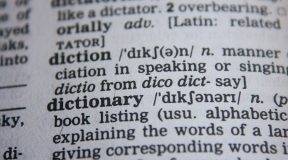When you break out of the content marketing outsourcing to look into the world of a content writing professional’s art form, you gain important context. It can help you discover better ways to yourself do research or give you an idea of what to look for in your hired content writers.
Good writers find a way to love their craft and develop systems to keep them at the top of their game. One of their strategies is to turn writing as a career, into writing to expand their education and horizons.
When you don’t know a topic well, meaning you haven’t been exposed to enough information or experience to quickly solve certain problems, you enter into the unknown. The excitement of the unknown is the journey of researching a topic and discovering yourself, just how powerful that journey is.
Writer’s and Reader’s Benefits

You weren’t looking for the information. You weren’t thinking about it at all until someone asked you to write about it. You may not have been exposed to it in your life, but here you are, triggered to get your learn on.
The beauty of writing for a living is in the repetition. Writing about the same topic (and researching it each time to see if there is something you’ve never covered before) over and over again, your brain starts to collect little pieces of data and that can build up curiosity. Curiosity can be magical.

As the writer researches the theme of your article they start to ask themselves what the end reader would want to know. They start thinking about angles, and each succeeding article becomes more polished and updated than the last. They can cover the same content but from a different angle that turns it into a wholefully useful article to the reader who only saw it, and also the reader that read the last one.

When you have a symphony of writers tap tap tapping away at their keyboards all asking the same questions but their perception of the answers become the seasoning on the work.
You also get the power of synergy as the writers generally have different experiences in their life and educational pursuits, leading to each article having a new flavor, fact, and perception.
Google Can Read the Article
When you outsource for your blog, and you want to focus on a specific keyword or theme, you will need multiple articles starting at the same place. With multiple writers taking turns to write your work, you get a more interesting article than if a single writer writes them all. Unique is a factor that makes your article stand out even to the search engines.
In today’s web, each article on a page, rather each page on a site- is treated as a stand-alone concept. This means you have to not only rank your site as a whole, but each page, every blog post must in its own right, be unique, informative, and not redundant.
Synergy in Motion

While incorporating both points of view. In this way, as writers, you contribute to not only other research, but your articles become useful to those looking for information and those trying to figure something out that that same information can help with.
Ultimately, it’s useful to the person who needs a constant article written and posted to boost their rankings, boosting their traffic. Google loves a well written, potent article and content is your online business’s best traffic asset.
In researching, we can get frustrated at reading the same topical information without changes (small things you didn’t know that make the whole article useful even if it’s talking about the same thing). What you may not have thought of, is that the writing the writer painstakingly pulls into existence is likely to have gotten its information from…
Another article was written much like theirs (same researching other articles on the web for the nuggets of new data they can write into the work to dazzle you with useful information that’s often useful in taking someone else’s research to another level).

Professional writers learn more and can articulate from a place of wonder. Readers love to read a good story wrapped in useful data, but more data than story. They’re often also in a hurry, have a deadline and that kind of thing.
Interest in a topic seems to be a way that connects the writer and the reader. Interest leads to wonder leads to questions, lead to the right answers for anyone needing this information (including the writer who had to articulate it in the first place).
Good Writing is Complete but Widens Your Perspective for Further Research (or topics to extend into your blog)

When you connect with the gold embedded in the content a good writer will stir up some questions- and then answer them before your done reading the article.
The writer will even prompt you about further research simply by mentioning something and giving the reader enough information to spark new research. As each person’s needs are different; an article may be more useful in some parts than others for different people.
Formatting Helps Researchers Scan for NEW Data

It’s the writer’s responsibility to make reading their article as “choose your own adventure” as possible in the sense that each reader can scan the article and quickly see what information they want.
They can often read your articles like they get their news. They scan and read only the parts that speak to their questions or curiosity, and skip the rest (or scanning tells them overall if your points are things they don’t know, then they return to the top and read it if your points, well, point to the solution!
Formatting prepares them for this benefit.
Formatting the article to put the points in bold subtitles that describe the paragraph and the paragraph gives more details about the subtitle’s promise. If they already know something, your subheadings help them to scan past it and to quickly find the information they didn’t know and need.
It’s important to put the subtitle over the paragraph, not inside it, unless you bold print it (separate line is recommended). Scanners want to read a quick statement that tells them if your article is going to help them- that’s the subtitle and title.
Other things to keep in mind are how you should break up content. You can write your paragraphs with 4-6 sentences, or you can break it into 3-4 to add white space around clusters of words.
You can use bullet points to write short or even longer statements (a perfect place to hide some further research nuggets i.e. beyond the scope of your article but none the less the next thing they need to lookup.
Almost There

Good formatting, useful research found, articulation all being done, you need to take an overall look at your work and make sure it’s not mechanically written or telling them common sense things. It must be engaging as well as informative and easy to scan, especially if they’re reading it on the go on their phone or tablet.
Engaging the reader is essential to connecting the article’s points together while lending a unique point of view that in and of itself may excite you about the information. Your excitement, of course, leads to your elation of feeling like you have the next step figured out (or the last step figured out freeing the reader to continue their research.
Whether you need outsourcing or you want to write it yourself, I hope this was helpful in giving you some framework of how an impactful article is written. It’s a process on both sides, even as a general researcher looking for ideas or just wanting to know enough to contact a business and having a rudimentary understanding of their problem and how it relates to what they need to ask, alert them of, and overall so they know what questions to ask. Writing is an artform, complete with an array of skillset building tasks.
Good Luck!





